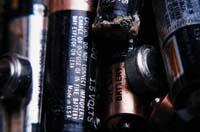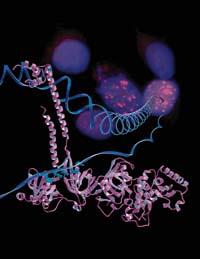Infect or not contaminate, bleeding from cadmium

XIX. Friedrich Strohmeyer first discovered cadmium at the beginning of the twentieth century in Germany. By heating the zinc carbonate that contained impurities, he saw that it changed color, something that did not happen to the pure and discovered cadmium in those impurities. The name also receives it from the Latin cadmia of zinc carbonate. For one hundred years, Germany was the only global producer of cadmium.
Cadmium is obtained as a side product of the production of other metals, mainly zinc, but also copper and lead. However, this flanking product is not wasted due to its multiple industrial and technological applications.
In fact, cadmium has interesting properties. High corrosion resistance, especially in alkaline and saline media. In addition, it has low melting temperature and high thermal and electrical conductivity. Cadmium compounds are very persistent, they resist high temperatures and ultraviolet rays can prevent the degradation of certain plastics. Finally, some cadmium compounds present semiconductor properties.
With these properties, cadmium and its compounds have various uses: pigments, stabilizers, coatings, special alloys, electronic compounds, etc. But the most important use today is that of batteries and batteries of nickel cadmium (NiCd). For this purpose, more than 80% of cadmium is used.
From Van Gogh to solar energy
The first application of cadmium was probably pigments based on cadmium sulfide. They were first used in 1850 and cadmium is an important element in Van Gogh's paintings at the end of this century.

With cadmium sulfide and cadmium sulphoselenides, pigments ranging from their duration to live red can be obtained. These pigments are very stable and can withstand high temperatures and pressures. For this reason, they are of great utility for those materials that must bear these conditions. Currently used in plastics, ceramics, glass, enamels, etc.
At the time when Van Gogh painted with cadmium, iodide cadmium was also used in medicine to treat various diseases, although cadmium was very toxic. From that time it is also the first cadmium nickel cell. It was invented by the Swedish Waldemar Jungnerr in 1899. However, the success of this pile came later and, at that time, cadmium was mainly used as anticorrosive coating for steel.
At present, steel, aluminum and other metals are coated with cadmium when it is intended to achieve corrosion resistance and a lubricity or low friction. It has several electrical and electronic applications that require high corrosion resistance and low resistance to electricity.
It is also used in special alloys in which cadmium is used in small quantities to improve the physical, mechanical, or electrochemical properties of alloys based on copper, tin, lead, and zinc.
Success of NiCd batteries. It came from the mid-twentieth century and, above all, from the 1990s, with rechargeable batteries. At the end of that decade, one and a half billion batteries and batteries were produced annually.
The batteries and batteries of NiCd have in the cathode nickel hydroxide and in the anode the hydroxide of cadmium. They are very versatile. On the one hand, there are batteries. They are common in trains and planes to obtain power of departure and emergency. They are also suitable for electric vehicles with a good weight/energy ratio. They are also used in portable devices such as laptops, mobile phones, etc. On the other hand, NiCd batteries are reusable and can be used on any device with batteries.

Intentional or unintentionally
In all these applications, cadmium is used in a specific way, taking advantage of its properties. In addition, cadmium is present in other products, not for its own use in manufacturing, but as impurities. It can be present in zinc, copper and lead, iron and steel, as well as fossil fuels (hydrocarbons, natural gas, coal, wood), cement and phosphate fertilizers.
In addition, the latter are more related to cadmium contamination. According to a study, 40% of the cadmium that reaches the human being comes from the use of phosphate fertilizers and 20% of fuels. The products manufactured with cadmium contribute 2.5% as the production of cement.
The combustion of fuels, the manufacture of cement and the metal industry generate emissions of cadmium to air and water. The use of phosphate fertilizers, on the other hand, produces soil and water pollution. However, even if a product, any, ends in landfill or incinerator, this cadmium will eventually be poured and contaminated adjacent lands and waters.
No benefit for life

And cadmium, biologically, we do not need living things at all. It is known the case of a single living to which cadmium is useful. It seems that some diatoms, with very low zinc in the environment in which they live, use cadmium as a substitute. But cadmium is toxic to the rest of life.
In humans and many other animals, cadmium accumulates in the body, especially in the liver and kidneys. Thus, the accumulation of cadmium can cause kidney damage and reduce the reabsorption of certain molecules, such as proteins, glucose and amino acids.
On the other hand, it is also harmful to the bones, since it affects the metabolism of calcium. Thus, the bones soften (osteomalacia), lose mass and weaken (osteoporosis). This causes back and joint pain, increasing the risk of bone fracture.
In addition, the International Agency for Cancer Research (IARC) classifies humans as carcinogen and several studies relate them to lung cancer and others. It seems that in addition to causing genetic mutations it blocks the repair system of these mutations.
Vegetables 'enriched' with cadmium
At present, for most of the population, the main source of cadmium is food. In fact, phosphate fertilizers are widely used in agriculture and are contaminated with cadmium, both land and vegetables. However, in general, the amount of cadmium that is ingested with food is not worrying. Currently, the daily average consumption is 10-25 g of cadmium, which can be 60-70 g/day, according to the World Health Organization.

On the other hand, staff working with products containing cadmium should be more careful and work properly protected. The risk may also increase in the vicinity of industries that emit cadmium. However, despite the fact that in the 1950s and 1960s the industry emitted quite a lot of cadmium, since then measures have been taken that have decreased considerably.
Several governments are taking steps to combat cadmium contamination. The European Union, for example, has in force various regulations to reduce the use of cadmium. In 2002, he developed the Batteries and Batteries Directive which regulated that batteries cannot have more than 0.002% of their weight and that batteries and batteries used must be collected and recycled. As a result of these regulations, many producers moved to countries without borders, especially China and Japan. In 2004, for example, in China alone, 800 million batteries were produced, 20% more than the previous year. Worldwide, the consumption of batteries has grown continuously in the last 15 years.
And not only batteries, also cadmium is produced more and more in the world -- China and Japan are the main producers --. In 2005 there were 19,400 tons of cadmium, 700 tons more than in 2004.
In addition, we must not forget that cadmium is a side product in the exploitation of other metals. And that as these other metals are extracted, the extraction of cadmium will also proceed. If this cadmium is not used at all, it would be a very polluting residue. Therefore, we must give you some solution.
Without burning with fire

The use of cadmium does not mean or want to be contaminated. Not everything is black or white and cadmium can offer very vivid colors, but ask Van Gogh.
It is clear that cadmium can cause a lot of damage and is dangerous. But it is also possible to use it well. No one is contaminated by the use of NiCd batteries and if we pick them up they are recyclable. In addition, when rechargeable, consider the number of single-use batteries that can be replaced. The problem arises when these batteries end up in the dump. Unfortunately, every year, 2,000 tons of cadmium are thrown into the trash, in the batteries.
With these 2,000 tons of cadmium poured into the garbage, 30 billion watts -- 15 in nuclear power stations -- can be reached in photovoltaic cells. In these cells, cadmium is securely trapped for a period of about 20-30 years. Then, this cadmium is completely recyclable. Throughout these years, electricity can be obtained in a clean way. Remember also that this electricity obtained with solar energy is used to power electric vehicles with NiCd battery. These vehicles will not burn fuel. How many cadmiums could be avoided?
Well, after all, it seems that good use can contribute to polluting less. Contaminating or not contaminating is in our hands.


Buletina
Bidali zure helbide elektronikoa eta jaso asteroko buletina zure sarrera-ontzian











